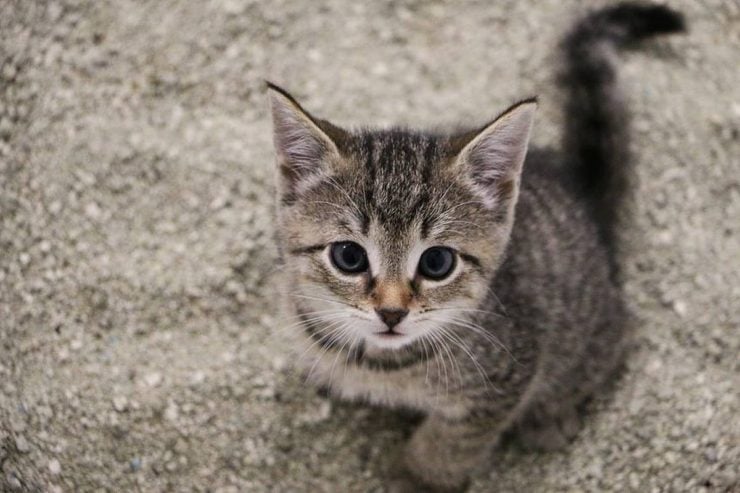It’s easy to litter train a kitten. In most cases, the task does not even require a specialized “training”. Quite often it’s enough if you provide an appropriate litter box because cats naturally love burying their feces and urine.

How to train a kitten to use a litterbox: 9 of our best tips
How early can you start to train a kitten to use the litter box? Training can be started at around the age of four weeks. This coincides with an ideal time when a kitten leaves its mom. If the kitten could observe the queen use the litter box, it is a massive advantage.
- Get an appropriate litter box. Kittens require litter boxes with shallow edges. If you have cats already, the box they use may not be suitable as the kitten will find it hard to climb in it. Also, in case of more cats at home, it’s good that kitten has its own box in a safe place, so he does not compete for its use. The box should not have a cover, at least initially the cover must be taken off.
- Make the litter box accessible. Easily accessible not only means the doors are always open. Besides physical barriers, make sure there is nothing that may scare the kitten from using the box. Best, if your kitten is spending his first weeks at the new home in a single room, especially if the house has other pets. This room should have everything he needs, including a litter box. The box should be in plain sight, away from home appliances, food or water.
- Appropriate litter. Best preferences for kittens are absorbing clay, plant fiber, or silica litter. Kittens explore the world by tasting it, which means that clumping clay litter and some others might not be safe. Some pets stores offer kitten litter, which is a safe choice — if the package states it’s safe for kittens, it most likely is. Litter types that claim to be specialized training or attractant litters are better viewed as marketing tricks.
See this article: Pros and cons of most common cat litter types. - Place your kitten in the litter box at the right times. Kittens usually relieve right after they wake up, play or eat. Watch for these crucial moments and place the kitten inside the box after them. Additionally, learn to recognize how your kitten walks before the elimination. It will help you to know when to place a kitten inside the box. Remember, the more often you catch these moments, the easier it will be to train your kitten to use the litter box.
- “Teach” your kitten how to rake. Once you place your kitten inside the litter box, he may not initially understand what he has to do. Gently take his paw inside your hand and move them to rake the litter. Cats naturally dig the soil to cover their waste and, at around four weeks of age, kittens start to explore in this area as well. They learn which substances are easy to rake and which are not.
- Place stool inside the box. If your kitten still has not grasped the purpose of the box and just plays in it like a sandbox, one trick to try is to place his stool inside it. Cats use scents to associate things with actions. If a place has a smell of toilet, then it is a toilet.
- Do not punish for accidents. Once your kitten understands the primary use of the box, next should happen rapidly. Accidents, however, will happen. If it does, place the kitten inside the box once you discover it. If it’s fresh, you can say: “No!” before that. However, do not show any anger or punish the kitten. You do not want your kitten to associate punishment with the box or he may later avoid it.
- Add more boxes as needed. Once your kitten starts to explore, his territory will increase. It’s best to add more boxes, at least for the initial training, so at any given moment there is one nearby. Especially if your house is large and you have other pets, as well.
- Keep the box clean. Scoop the box at least daily, or more, if possible. Untidy litter boxy is the number one reason why cats don’t use the litter-box. Of course, we mentioned that scent helps cats to identify the box as the right place to eliminate. However, a soiled litter box is the other extreme. If a box is too dirty, the cat will find it unpleasant to be near and will choose the next best option. If you train your cat to use the litter box, you don’t want any obstacles.
As we said numerous times, training a cat to use the litter box is easy. If things don’t go smoothly, the above tips will equip you for success.
